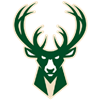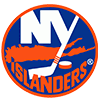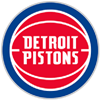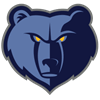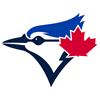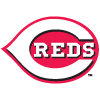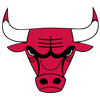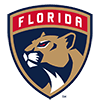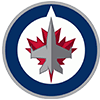For the third year in a row, I will be going division by division, providing analysis on every fantasy-relevant prospect in baseball while also ranking those prospects in their respective systems. This means there will be 20-plus prospects ranked in certain systems and less than 10 prospects ranked in others. There is no point in listing an irrelevant prospect just to reach an arbitrary total of 10, 20 or 30. Similarly, it is unfortunate to not include information on highly relevant prospects just because that prospect was not one of his team's 10 or 20 best.
The second installment takes us to the 117 prospects you need to know in the American League Central.
I wrote the outlooks for most of the guys in the top 250 or so of the top 400 prospect rankings, so if you want more in depth analysis on someone, check out their player profile. Feel free to ask me any prospect-related questions in the comments section or on Twitter.
 WHITE SOX
WHITE SOX
This system is once again very top heavy. The White Sox have had no problem acquiring high-end prospects, but they have had very little success turning under-the-radar players into significant assets – of course, that would have been the story with Fernando Tatis Jr. if they hadn't given him away for James Shields. Eloy Jimenez is the clear jewel of this system, but prospects 2-5 could be ranked in varying orders by reasonable minds. The same could be said of the
For the third year in a row, I will be going division by division, providing analysis on every fantasy-relevant prospect in baseball while also ranking those prospects in their respective systems. This means there will be 20-plus prospects ranked in certain systems and less than 10 prospects ranked in others. There is no point in listing an irrelevant prospect just to reach an arbitrary total of 10, 20 or 30. Similarly, it is unfortunate to not include information on highly relevant prospects just because that prospect was not one of his team's 10 or 20 best.
The second installment takes us to the 117 prospects you need to know in the American League Central.
I wrote the outlooks for most of the guys in the top 250 or so of the top 400 prospect rankings, so if you want more in depth analysis on someone, check out their player profile. Feel free to ask me any prospect-related questions in the comments section or on Twitter.
 WHITE SOX
WHITE SOX
This system is once again very top heavy. The White Sox have had no problem acquiring high-end prospects, but they have had very little success turning under-the-radar players into significant assets – of course, that would have been the story with Fernando Tatis Jr. if they hadn't given him away for James Shields. Eloy Jimenez is the clear jewel of this system, but prospects 2-5 could be ranked in varying orders by reasonable minds. The same could be said of the outfielders in spots 6-8. Things really fall off after that.
1. Eloy Jimenez, OF, 22, Triple-A
Eloy Jimenez is GOOD at baseball 💪#WhiteSoxpic.twitter.com/37gld6lqB9
— White Sox Talk (@NBCSWhiteSox) August 31, 2018
Everyone knows Vlad is a slam dunk at No. 1, and I think Jimenez is just as clear a choice at No. 2 (for fantasy). He will be up in April, will hit in the middle of the lineup all season and should produce like prime Nelson Cruz during his peak seasons. The one concern is that Jimenez has missed time with a variety of injuries in each of the last two seasons and is currently on the mend from a quadriceps injury.
2. Michael Kopech, RHP, 22, Rehabbing TJS (September 2018)
Michael Kopech finally showed us his changeup.91mph of FILTH. pic.twitter.com/KPqVTV6zUh
— Pitcher List (@PitcherList) August 22, 2018
Kopech boosted his stock during his brief run in the majors before tearing his UCL. He posted truly elite spin rates in addition to the elite velocity we already knew he had, while also showing that his secondary pitches have the potential to be really nasty. Over the next calendar year, he will be like a low-yield bond – there's a 100 percent chance he will be a top-25 prospect a year from now, assuming he doesn't experience significant setbacks in his recovery from Tommy John surgery. He may not have the potential to climb into the top 10 this year, but at least we know he is not going to depreciate. The timing of his surgery works perfectly, as he should be pitching in spring training games in 2020.
3. Dylan Cease, RHP, 23, Double-A
Dylan Cease tonight: 6 IP, 2 H, 0 R, 2 BB, 5 K. pic.twitter.com/JTYCAHHSQH
— Chuck Garfien (@ChuckGarfien) April 14, 2018
Cease took big strides last year to prove he belongs in the rotation long term. Everything plays off his 94-98 mph heater. His curveball has a chance to be plus, his changeup is useful, and his command is fringe average. He could be a SP2 as early as 2020 with a chance for more.
4. Nick Madrigal, 2B/SS, 22, Double-A
It is up to dynasty-league owners to decide how valuable a player who hits .300 with 90-100 runs, 60-70 RBI, 5-10 home runs and 20-plus steals is worth. That's a pretty safe bet for Madrigal in his peak seasons, and I think that makes him a borderline top-50 prospect. He should be up in April 2020.
5. Luis Robert, OF, 21, High-A
Luis Robert is hitting .361 in the @MLBazFallLeague.Luis Robert has reached base safely in 14 of 15 Fall League games.Luis Robert is 🔥🔥🔥.#NextSoxpic.twitter.com/rxO9IvXBzA
— Chicago White Sox (@whitesox) November 12, 2018
Roughly 10 power/speed/questionable hit tool outfielders are ranked in the 40-80 range of the top 400, and not everyone will agree with how they should be slotted. If Robert hits for a decent average, he will make me look bad, but I think a .240 hitter who flirts with 20/20 seasons seems more likely.
6. Micker Adolfo, OF, 22, High-A
Took this open-side shot of Micker Adolfo's home run the other day. #WhiteSoxpic.twitter.com/9axk59KwjI
— Josh Norris (@jnorris427) June 13, 2018
Adolfo has never had a 20-HR season, but don't let that fool you. He is on the short list of minor-league hitters with the most raw power. The hit tool is shaky – if he hits .250, he's a stud. But there's a chance he may struggle to hit even .230 at the highest level.
7. Blake Rutherford, OF, 21, Double-A
It is difficult to slot Rutherford and the outfielder below him. To nobody's surprise, I'm going with the guy with the better hit tool, and that's Rutherford. Not much separates Rutherford and Alex Verdugo from a raw tools perspective – Verdugo gets the nod for age-relative-to-level and has a slightly better hit tool – but Rutherford could be just as good/middling.
8. Luis Alexander Basabe, OF, 22, Double-A
On this date two years ago, we received Luis Basabe as part of a trade for Dash alumnus Chris Sale.After a great first half in Winston, Luis took center stage in the Futures Game this year.📹: @MLBNetworkpic.twitter.com/mqBRvT1Cfs
— Winston-Salem Dash (@WSDashBaseball) December 6, 2018
Basabe still has pretty intriguing tools – he can hit for power against premium velocity and has plus speed. However, there is no evidence that he will ever hit for a solid batting average. In OBP leagues, I would probably take Basabe over Rutherford.
9. Dane Dunning, RHP, 24, Double-A
Dunning had a very concerning elbow strain last year that did not lead to Tommy John surgery, but that doesn't necessarily mean he is out of the woods. I'm lower on him because he is already pretty old, so if he undergoes Tommy John surgery we might not see him in the majors until he is 26, and the ceiling (No. 3/4 starter upside) wasn't that high to begin with.
10. Jake Burger, 3B/1B/DH, 22, Rehabbing torn Achilles (May 2018)
There is an argument that Burger shouldn't even be in the top 400, as he tore his Achilles last February and then retore it last May. This is a brutal injury to come back from, and the White Sox said he would miss 12 months, so we probably won't see him sent out to a full-season affiliate until June or July. He was the 11th overall pick in 2017, so he has pedigree and the offensive tools to profile at third base, but this injury could force him to first base or DH and the lost developmental time is a mighty blow.
11. Gavin Sheets, 1B, 22, Double-A
Sheets has pedigree (49th overall pick in 2017), impressive plate skills and huge raw power. Unfortunately, his in-game power lags way behind what he shows in batting practice. He was 23 percent better than the average Carolina League hitter despite hitting just six home runs last year, but he is still going to need to start getting to his power more regularly to profile as a big-league first baseman.
12. Zack Collins, C/DH, 24, Triple-A
Collins' value is very format dependent. In two-catcher OBP leagues, he is a borderline top-150 prospect. In one-catcher AVG leagues, he is not even a top-250 prospect. He walks a lot, strikes out a lot, has 25-homer power and is a below-average defender behind the dish. While the White Sox are currently still "rebuilding", it is clear they would like to contend sooner than later, so Collins' defense needs to improve in a hurry.
13. Luis Gonzalez, OF, 23, Double-A
The 87th overall pick in 2017, Gonzalez put up excellent numbers in his first full season, but there are a couple red flags. The lefty-hitting outfielder has not yet played above High-A and had a very pull-heavy approach in the lower levels. He doesn't have plus power or plus speed, and without an adjustment, he will face aggressive defensive shifts.
14. Steele Walker, OF, 22, High-A
Walker had poor luck on balls in play in his pro debut after the White Sox gave him $2 million in the second round last year. Given his age and college production, he may be sent to High-A despite a lack of success at Low-A. Defensively, he is limited to left field, so the bat will really need to carry him.
15. Bryce Bush, 3B, 19, Low-A
Bush received $290,000, so he is far from a typical 33rd-round pick. Plus bat speed leads to consistent contact and plus raw power, and he peppered over 40 percent of his hits to the opposite field in his pro debut. His short swing may need to be reworked a little in order for him to get to more power in games, but this is definitely a guy to keep an eye on as he makes his full-season debut.
16. Ian Hamilton, RHP, 23, MLB
Did you see Ian Hamilton's first career strikeout? Check out the movement and then the reaction from the Tigers Victor Reyes. pic.twitter.com/I6G4luwgdZ
— Chuck Garfien (@ChuckGarfien) September 4, 2018
The White Sox all of a sudden have a handful of relievers with ninth-inning experience, so Hamilton may not figure into the saves mix in 2019, but he has the stuff to be effective in that role. Just on pure stuff, he is a better relief prospect than Ty Buttrey, who was a trendy late-round pick before the Angels signed Cody Allen.
17. Zack Burdi, RHP, 24, Triple-A
Burdi has a more electric arsenal than Hamilton, but he also has significant injury risk and his command has always been shaky. He underwent Tommy John surgery in July of 2017, and was set to make up for lost time in the AFL, but needed to be shut down with general fatigue. Given his missed time, I think the White Sox would be wise to let him spend most of the first half at Triple-A.
18. Laz Rivera, 2B, 24, Double-A
Considering Rivera's age and defensive home, it is definitely concerning that he has not played at Double-A and struggled in the AFL in 2018. He makes contact at a solid clip and has power and speed, but his aggressive approach will likely get exploited in the upper levels.
19. Alec Hansen, RHP, 24, Double-A
People often preach patience with prospects and say things like "don't scout the stat line". That's all fine and good in some cases, but pitching prospects are already devalued by most dynasty-league managers, so why would you waste a roster spot on a 24-year-old coming off a year where he walked more batters (59) than he struck out (55) in 51.1 innings? Yes, I know a forearm injury played a part, but are we really going to use a pitcher being hurt as positive spin? Even if he gets off to a good start in 2019, he will still be an old pitching prospect with significant command/control concerns dating back to college.
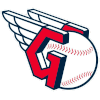 INDIANS
INDIANS
For a hipster like me, this farm system is amazing. I think it will be a consensus top-five system by the end of the year and could be the No. 1 system in baseball by the end of 2020. Seven of the players in the top-15 were born in 2000 or later, and only eight of the 28 players listed here were born before 1998. If you live in Ohio, make sure to go see Mahoning Valley and Lake County this season – those rosters will be absolutely stacked.
1. Nolan Jones, 3B, 20, High-A
#IndiansNolan Jones with a 💣 for his 1st High A hit and HR. #Top100#crushedpic.twitter.com/3cHRLXezY9
— Jason Woodell (@JasonAtTheGame) August 4, 2018
Jones has established himself as a top-50 prospect and a borderline top-25 prospect in OBP leagues. Yes, he strikes out 25 percent of the time, but the rest of his offensive profile is elite. He should be a 30-homer third baseman whose plate skills warrant middle-of-the-order placement. Jones could return to High-A for a month, but should spend most of the year at Double-A.
2. George Valera, OF, 18, New York-Penn League
#Indians 17yr old highly touted OF prospect George Valera with his first HR in just his 3rd game as a pro during Arizona Rookie League action. Valera signed last July 2nd out of the Dominican Republic for $1.3MM #Future#AZL@GV13__pic.twitter.com/5MIV2acauh
— Indians Prospective (@indiansPro) June 23, 2018
Valera is a tough rank, as he was the clear No. 2 hitter from his J-2 class behind Wander Franco when short-season play opened, but a broken hand limited him to six games. It would be a mistake to discount him too much, as he still has OF1 upside and could move quickly. An assignment straight from spring training to Low-A is possible, and would tell us quite a lot about what the Indians think of their next great hitter.
3. Triston McKenzie, RHP, 21, Triple-A
This might finally be the year when McKenzie makes his MLB debut. He missed time at the start of last season with a forearm issue, but was dominant once he rounded into form. Still rail thin, his physique is the only thing that could prevent him from being at least a mid-rotation starter.
4. Tyler Freeman, SS/2B, 19, Low-A
Tyler Freeman, SS, the 71st pick in the '17 Draft, lines a double down the line for the Mahoning Valley Scrappers in Auburn, NY. Freeman leads the #NYPennLeague in hits, and is the 11th ranked #Indians prospect per @Prospects1500#MiLB#TeamMcCoypic.twitter.com/Qq8GjsT9rI
— Ben Wilson (@TBDubbs11) July 18, 2018
It is not unrealistic to think Freeman could hit .300 with 12 HR and 15 SB while hitting first or second in a big-league lineup. Only Mookie Betts, Christian Yelich, Jose Altuve, Mike Trout and Whit Merrifield reached those benchmarks in 2018. I'd be trying to buy high on him.
5. Brayan Rocchio, 2B, 18, New York-Penn League
Impressive 2017 International signing out of Venezuela video of 17yr old (SS) Brayan Rocchio with his first Arizona Rookie League HR for the AZL Indians (2) squad. #Indians#Futurepic.twitter.com/88f1BjrY2a
— Indians Prospective (@indiansPro) July 30, 2018
The easiest comp for Rocchio is Ozzie Albies – switch hitter, advanced hit tool, plus speed, no-doubt middle infielder. Of course, Albies surprisingly turned into a power threat in his first full MLB season, so we shouldn't try too hard to project Rocchio. He's really, really good and turned 18 in January.
6. Luis Oviedo, RHP, 19, Low-A
Still just a dynasty-league name and little more, Oviedo has the talent to explode onto the national radar in his first full season. He has ace-like qualities (potential for four plus pitches, good command), we just need to hope he stays relatively healthy on his road to the majors.
7. Ethan Hankins, RHP, 18, New York-Penn League
This was Ethan Hankins back in September. Yikes. pic.twitter.com/pU4tEsFRz5
— Brewers Farm (@BrewersFarm) May 31, 2018
Hankins' fastball is one of the best pitches in the world when he's healthy. If he hadn't hurt his shoulder as a high-school senior, he would be talked about like Hunter Greene. The Indians will be really careful with him this year, but if he returns to form, his stock will go through the roof.
8. Lenny Torres Jr., RHP, 18, New York-Penn League
There is surprisingly little hype surrounding Torres, one of the youngest players from the 2018 draft class. He already owns a mid-90s fastball and a plus slider, and those pitches could both be 70-grade offerings in a couple years. Developing his changeup will be key.
9. Carlos Vargas, RHP, 19, New York-Penn League
The Indians have such a fun, underrated system, that Vargas and Torres have frontline upside but are still a little under the radar. Vargas will touch 99 mph while throwing a wipeout slider. His command/control needs work, as does his changeup, but his stock is trending way up.
10. Bo Naylor, C/3B, 19, New York-Penn League
Naylor has some similarities to Daulton Varsho – a catcher with a good hit tool and above-average speed who is capable of playing other positions. The best-case scenario is that he hits around .300 with 15-20 HR and 15-20 SB, but as a prep catching prospect, he could also completely bust.
11. Johnathan Rodriguez, OF, 19, New York-Penn League
Don't let Rodriguez's power output fool you,. He should have no trouble developing plus raw power in time, but has focused on developing his hit tool in rookie ball. The switch hitter should continue to fill out his 6-foot-3, 180-pound frame, likely ending up in right field. His approach was excellent in the AZL and he could break out over the next or two.
12. Gabriel Rodriguez, SS/3B, 17, Dominican Summer League
Rodriguez netted $2.1 million during the 2018 J-2 international signing period. He was already 6-foot-2, 174 pounds when he signed as a 16-year-old, so it is unclear where he will end up defensively. Speed isn't a big part of his game, but he could develop a plus hit tool with above-average power.
13. Richard Palacios, 2B/OF, 21, Low-A
Palacios doesn't bring much to the table defensively, which is part of the reason why the Indians were able to pop him in the third round last year. However, his offensive output across three levels during his debut was spectacular. He walked more than he struck out in rookie ball and hit .300 with two homers and three steals in 20 games at Low-A, where he will likely return to start 2019. Palacios needs to keep hitting to project as more than a bench bat.
14. Junior Sanquintin, 3B/2B, 17, Dominican Summer League
A bat-first infielder from the Dominican Republic, Sanquintin received $1.25 million on July 2, 2018. He is expected to be a power-over-hit offensive weapon who may end up at third base or second base. Speed is not a big part of the equation.
15. Sam Hentges, LHP, 22, Double-A
Hentges returned from Tommy John surgery last year and struck out over a batter per inning at High-A. He could reach Triple-A by the end of his age-22/23 season, but will need to improve his changeup and command/control to profile as a No. 3 or No. 4 starter.
16. Oscar Mercado, OF, 24, Triple-A
Mercado fits the Indians' short-term needs (outfield help), but the trade that sent Jhon Torres to St. Louis now looks pretty lopsided in the Cardinals' favor. For his part, Mercado is close to big-league ready, it's just a matter of whether he will hit enough to supplant someone like Greg Allen. If he does earn playing time, Mercado's plus speed would provide value in many formats.
17. Bobby Bradley, 1B, 22, Triple-A
Bradley has inched closer and closer to the majors and not much about his profile has changed, yet his dynasty-league value has continued to drop in recent years. Those who rostered him two or three years ago were likely hoping that he would develop into a better hitter so that he could provide big power without being a batting-average drain, but that now seems unlikely. He may make his big-league debut in 2019, and has enough raw power to be relevant in AL-only leagues.
18. Raynel Delgado, 2B/3B/SS, 18, New York-Penn League
Delgado received $900,000, more than triple the slot value, after the Indians snagged him in the sixth round last year. His AZL performance was pretty impressive, but he will need to gradually develop a bit more power in order to profile as a regular at third base or second base. His 10 steals in 46 games oversell his upside in that category.
19. Yu Chang, SS/2B/3B, 23, Triple-A
As things currently stand, Chang may make his big-league debut this season as a utility infielder, capable of playing all over the dirt. He would have 15/15 upside if he played regularly, but would likely hit below .250. Chang would benefit from a trade to a rebuilding club.
20. Will Benson, OF, 20, Low-A
It's a testament to Benson's raw tools and athleticism that he remains in the Indians' top 20 and on the overall top 400 after hitting .180 in the Midwest League last year. He was somewhat unlucky on balls in play and struck out 30 percent of the time, but also had an awful 31.4 IFFB%. Even with all those struggles, Benson managed 22 home runs and 12 steals. The odds are long that he ever hits enough to be a big-league regular, but his tools dwarf those of most minor-league outfielders, so patience is warranted in deeper leagues.
21. Daniel Johnson, OF, 23, Double-A
Johnson was the headliner in the deal that sent Yan Gomes (under control for 2019 with team options for 2020 and 2021 that will likely get turned down) to Washington. While Johnson's plus speed (he also has some pop) is enticing and the change in organizations makes it more likely that he will get a chance in the majors, there is little proof that he will hit enough to be of significant value.
22. Aaron Bracho, 2B/SS, 17, Arizona League
Bracho, who signed for $1.5 million on July 2, 2017, and Valera had similar 2018 seasons. While Valera played in just six games, Bracho didn't play in any official games at all due to a leg injury. He doesn't have the upside of his J-2 classmate, but could still develop something close to a plus hit tool (he's a switch hitter) with 15-20-homer pop. Ideally he would hit near the top of the lineup, but we don't have enough data to suggest that is likely yet.
23. Quentin Holmes, OF, 19, Arizona League
Holmes is like a more mysterious, oft-injured version of Benson. He was drafted 64th overall in 2017, largely due to his wheels (at least 70-grade speed) and the thought was that as a prep hitter from the Northeast, there might be untapped offensive potential. Holmes hasn't played much and has struggled in his brief game action. If he starts hitting, even if he is slightly old for the level, his stock will soar.
24. Marcos Gonzalez, 2B/SS, New York-Penn League
A 2016 J-2 signee, Gonzalez didn't do much in the DSL in 2017 but put up impressive numbers last year in the AZL. He doesn't come with the hype of the infielders ahead of him on this list, but his pedigree and performance thus far warrant attention.
25. Eli Morgan, RHP, 22, Double-A
Morgan has one of the best changeups in the minors. His breaking ball and command are fine, but his fastball is typically parked at 89-91 mph, so it will be a tall order for him to have significant success as a big-league starter without a velocity jump. He is unlikely to debut until 2020, but if we see reports that the fastball is up in 92-94 mph range, that would be actionable data.
26. Chih-Wei Hu, RHP, 25, Triple-A
Hu is probably just going to be a middle reliever for the Indians, but I'm intrigued by the fact that the team targeted him in an offseason trade (they sent Gionti Turner to the Rays). He is on his third organization, but there have been times when he was a notable pitching prospect, and he has a deep repertoire. Perhaps the Indians think they know how to unlock the No. 3/4 starter upside that he flashed a couple years ago. I'll be paying attention if he gets stretched out this spring.
27. Jose Fermin, 2B, 20, Low-A
Fermin signed for $500,000 on July 2, 2015, but did not produce on the field until his age-19 season in the NYPL, where he walked more than he struck out and showed some speed on the bases. He is a little older than we'd like for an up-the-middle player heading to Low-A, but if he keeps hitting, he could climb this list.
28. Oscar Gonzalez, OF, 21, High-A
Gonzalez has hit for a higher average and struck out less against full-season pitching than I expected when I fell in love with his raw power in rookie ball a couple years ago. However, it's almost unheard of for a player to walk as little as Gonzalez does (2.5 BB% at Low-A) and develop into a useful big leaguer.
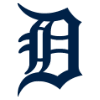 TIGERS
TIGERS
Despite the fact I listed over 20 guys, this list gets pretty rough outside the top 10. The Tigers just have so many big-league spots that are wide open long term, that it seemed worthwhile to include guys who are even slightly interesting, even if I don't believe in the specific player. Detroit has the second-best 1-2 pitching prospect duo in baseball (behind Oakland), and a few interesting infield prospects, but they are still at least a year away from having the type of farm system that a rebuilding club can be proud of.
1. Matt Manning, RHP, 21, Double-A
Here's that Matt Manning curveball I was talking about from two nights ago. 82 mph, about as good as of hook as you'll see pic.twitter.com/vsvFHd4ApC
— Kiley McDaniel (@kileymcd) August 25, 2018
When I teased my top-25 prospects on Twitter about a month ago, the most controversial name was Manning, specifically the fact that I had Manning ranked ahead of Mize (I might be the only person who does). Draft pedigree can often be overvalued, particularly when it comes to players from the most recent draft, and in this case I think people just put Mize atop Detroit's system by default, since he was the No. 1 overall pick last year. That's not to say I don't like Mize, I like him a lot. I just think Manning is the better prospect – he has frontline upside and has had immense success in a large sample against full-season hitters. Mize has frontline upside and has not yet had that success, through no fault of his own. Manning also happens to be almost a year younger. This is a great time to acquire Manning in dynasty leagues. By this summer it will be too late. Check out his outlook for a full breakdown of his impressive 2018 season.
Still enjoy watching this High-A pitch mix from #TigersMatt Manning from 2018.Expecting him to start the year with Double-A Erie in 2019. pic.twitter.com/bc48w9b4Y3
— Emily Waldon (@EmilyCWaldon) January 23, 2019
2. Casey Mize, RHP, 21, High-A
There is nothing actionable from Mize's 13.2 pro innings, except that he stayed healthy. He is the top pitching prospect from the 2018 draft class, with the potential for four (!) plus pitches and plus command. We just need to see it over a full season.
3. Daz Cameron, OF, 22, Triple-A
BP swing from #TigersDaz Cameron. pic.twitter.com/KDTIddn0qs
— Emily Waldon (@EmilyCWaldon) November 3, 2018
There is no guarantee that Cameron hits – I like him less now than I did Lewis Brinson a year ago – but he will steal plenty of bases and is really close to the majors. He is easily the best center fielder in Detroit's entire organization, and should also develop double-digit homer pop.
4. Isaac Paredes, 2B/3B, 20, Double-A
This is the rare case where a player who is super young for his level (Paredes excelled at Double-A and won't turn 20 until February) does not have a particularly exciting outlook. He is a below-average runner (his body is already bad) and is far too pull heavy. Paredes should be a decent everyday player who hits around .260 with 20-25 HR, but he is being overvalued in many dynasty leagues.
5. Wenceel Perez, SS, 19, Low-A
Wenceel Perez, SS, #Tigers. 18 y.o. 5'11 170 lbs. S/R.304/.373/.391Has a good feel for finding the barrel. Picks up spin. Patient hitter, doesn't mind hitting with 2 strikes. First 2B was off Clarke Schmidt. pic.twitter.com/79Gebrh9Xr
— Jason Woodell (@JasonAtTheGame) July 4, 2018
Of the half dozen or so teenage shortstop prospects with the potential for a plus hit tool and plus speed, at least one of them will pop in their first full season. It could be Perez, yet he lags well behind guys like Brayan Rocchio and Luis Garcia (Phillies) in terms of public discourse. He is the best shortstop in this system, but is also several years away.
6. Christin Stewart, DH/OF, 25, MLB
Stewart is a very tricky player to rank. He would be higher in OBP formats, but in 5x5 AVG leagues, I think he will be a 1.5-category guy in 2019 and maybe a 2.5-category guy in 2020. If I just told you Stewart was going to hit .245 with 25 HR as a 25-year-old this year, would you have him higher or lower on the top 400? I just don't see much upside beyond that, and he could be a UTIL-only guy in a year or two.
7. Willi Castro, SS/2B, 21, Triple-A
Castro has had two pro stops where he was an above-league-average hitter: 123 games at High-A in 2017 (115 wRC+) and 26 games at Double-A in 2018 (155 wRC+), directly after he was traded to Detroit from Cleveland (for Leonys Martin and Kyle Dowdy) and aided by a .395 BABIP. That's not a lot to go on, but Castro's batted-ball profile was excellent after the trade. He will likely be the first of the infielders in this top 10 to reach the majors in 2019, and could steal 20 bases over a full season.
8. Franklin Perez, RHP, 21, Double-A
Perez has averaged under 60 innings per season over the last three years, most recently missing most of 2018 with lat and shoulder issues. If he had a remarkably high ceiling, patience might make more sense, but prior to the injuries he was seen as more of a safe No. 3 starter whose strong command might allow him to exceed that projection. He hasn't notched a strikeout rate above 18.3 percent since he was at High-A in 2017. Perez will be worth a look in single-season leagues when he's up and in the rotation, but this is not the type of pitcher I recommend stashing in dynasty leagues.
9. Parker Meadows, OF, 19, Low-A
The younger brother of Austin Meadows, Parker received a $2.5 million bonus after the Tigers selected him with the 44th overall pick last year. He is more power-over-hit at this stage of his career than Austin was. He is a plus runner now, but at 6-foot-5, he may be only average in that realm by the time he gets to the big leagues. There is upside, but also significant strikeout-related downside.
10. Elvin Rodriguez, RHP, 21, High-A
One of a collection of young arms developing in the #Tigers farm, 20-year-old Elvin Rodriguez is poised to have a breakout year in 2019. pic.twitter.com/PkBRpBo8PU
— Emily Waldon (@EmilyCWaldon) October 9, 2018
Rodriguez is available in your dynasty league. If I'm wrong, that means you're in a ridiculously deep league or someone in your league is following my rankings quite literally. At 6-foot-3, roughly 170 pounds, he is very projectable and will already flash an absolute hammer of a curveball. He could break out this year.
11. Jose De La Cruz, OF, 17, Dominican Summer League
The Tigers gave De La Cruz $1.8 million on July 2 of last year. He was already a muscular 6-foot-1, 195 pounds as a 16-year-old, so he will end up in an outfield corner. De La Cruz already has plus raw power, but it is unclear how much contact he will make.
12. Jake Rogers, C, 23, Double-A
Rogers hasn't hit much since getting traded to Detroit in the Justin Verlander trade, but he is one of the best defensive catchers in the minors, and will almost certainly be given a prominent role for Detroit in a year or two. He has hit in the past, and has above-average raw power, so with playing time should come deep-league value.
13. Carlos Guzman, RHP, 20, Low-A
Most position players who get converted to pitchers end up being relievers, but Guzman struck out over a batter per inning while notching a 3.86 ERA in 12 starts last year against short-season hitters. The reason for this is that most converted pitchers lack feel for a changeup (the typical third pitch), but Guzman, a former third baseman, has a potentially plus changeup to go with a low-90s fastball. If he can improve his breaking ball, he could be a big riser.
14. Adinso Reyes, 3B, 17, Dominican Summer League
Reyes received $1.45 million from Detroit as part of their 2018 J-2 international signing class. Like De La Cruz, power is the main selling point with Reyes, but there are even more questions about the latter's hit tool.
15. Beau Burrows, RHP, 22, Triple-A
Burrows seems best suited for a high-leverage relief role, where his 94-95 mph fastball would play up a few ticks, but it seems likely that the Tigers will give him a lengthy audition in the rotation at some point soon. His lack of a plus secondary pitch or even 50-grade command makes the whole profile relatively unappealing.
16. Kody Clemens, 2B, 22, High-A
One of Roger Clemens' sons, Kody received $600,000 in the third round of last year's draft. He could develop into a bat-first second baseman, but will need to do damage with the bat all the way up the ladder.
17. Jacob Robson, OF, 24, Triple-A
Pearson has shown strong on-base skills while being old for his level at every stop, which has led to impressive results relative to the rest of the hitters in those leagues. Now he is knocking on the door of the majors. He lacks plus power or plus speed, but could get a shot in an everyday role at some point in 2019.
18. Brock Deatherage, OF, 23, High-A
The Tigers gave Deatherage, a college senior, $10,000 after selecting him in the 10th round of the 2018 draft. He proceeded to hit .326/.385/.504 with seven home runs and 10 steals across three levels, making it all the way to High-A. It is more likely that he hits a wall either in a return to High-A or after a promotion to Double-A, but it's worth keeping an eye on how he does in his first full season.
19. Daniel Woodrow, OF, 24, Triple-A
Woodrow might be a late bloomer. He has always been a plus runner on the bases, but after hitting .313 with a 115 wRC+ as a 23-year-old at Double-A, he is on the map in this fairly shallow system. The hope is that he gets a shot as a glove-first left fielder or center fielder who hits near the bottom of the order and steals 20-plus bases.
20. Derek Hill, OF, 23, High-A
Speed is king right now, and Hill is not only a 70-grade runner, he is one of the best outfield defenders in the minors. He was the 23rd overall pick in 2014, but injuries early in his career interfered with his development at the plate. Hill only needs to profile as a No. 8 or No. 9 hitter to play everyday in center field, which would lead to some seasons with 25-plus steals.
21. Alex Faedo, RHP, 23, Double-A
I almost didn't include him, because his current stuff is that of a No. 5 starter, but he has a ton of pedigree (18th overall pick in 2017) and if his velocity were to rebound, which I don't think we should bet on, he could recapture the mid-rotation ceiling he flashed while at Florida.
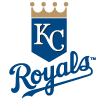 ROYALS
ROYALS
The Royals have a big three on the position player side, with the top three prospects on this list all cracking the top 100. They also have a big three on the pitching side, all of whom were acquired via the 2018 draft. There are some toolsy lottery tickets further down this list. While it is not currently a top-10 farm system, my expectation is that it will be a top-10 system after this year's draft and it could climb into the top five after the 2020 draft.
1. Khalil Lee, OF, 20, Double-A
#RoyalsKhalil Lee, pitch in, hands in, steaks for din-din. pic.twitter.com/DY6lbTCFR4
— John T Eshleman (@2080_John) October 17, 2018
Lee looks the part of a power/speed center fielder, but his aggressive promotions have not always led to impressive on-paper performance. He has cut down on his strikeouts and uses the whole field, so I think he could eventually hit .270 with 20-plus homers and around 20 steals.
2. Nick Pratto, 1B, 20, High-A
Nick Pratto, the @Royals' No. 6 prospect, had 14 homers and 22 stolen bases in his full-season debut with @LexingtonLegend this year. After homering last night, he has 2 HR & 2 SB in 3 playoff games and 4 homers in his past 6 games: https://t.co/CV96dVv8EKpic.twitter.com/Nj3L5MygBk
— MLB Pipeline (@MLBPipeline) September 11, 2018
Pratto is a cautionary tale when it comes to overreacting to a 19-year-old's first few months in full-season ball. I overreacted. I was wrong. His stolen-base totals are extremely unsustainable, but he could be a .285 AVG, 30-homer first baseman in a neutral park. In Kansas City, however, his power may only translate to 20-25 homers. That said, he could hit third or fourth in the majors once he establishes himself.
3. MJ Melendez, C, 20, High-A
MJ Melendez, the @Royals' No. 5 prospect, launched 2⃣ homers for @LexingtonLegend last night. More: https://t.co/xqSYzManAApic.twitter.com/qoKnISPeiY
— MLB Pipeline (@MLBPipeline) August 29, 2018
He is not my top catching prospect, but it would not be unreasonable to view Melendez, who is very athletic for the position, as the top fantasy catcher in the minors. Look for him to stick behind the dish, hit around .240 and blast 25-plus home runs annually.
4. Daniel Lynch, LHP, 22, High-A
When you invest heavily in pitchers like the Royals did in the 2018 draft, there will inevitably be some busts, but there will also be some big scores. Lynch was the big score last summer, as his stuff ticked up after signing and he dominated lower-level hitters. Don't hesitate to get aggressive with Lynch in the second round of first-year-player drafts.
5. Kyle Isbel, OF, 22, High-A
We always have to be careful not to get overly excited about the production of Day 2 college picks in the lower levels. Isbel's performance is hard to ignore, however, particularly his stolen-base upside. He could develop into a .270 hitter who hits 12-15 HR and steals 25-plus bases.
6. Jackson Kowar, RHP, 22, High-A
Kowar received $2.1475 million after the Royals selected him with the 33rd overall pick last year. He has more upside than Brady Singer, but is less of a finished product. At 6-foot-5, 180 pounds, he has an excellent, projectable frame, which could allow his fastball to eventually sit in the upper 90s. Kowar's best pitch is a filthy changeup, but he will need to improve his breaking ball to be better than a mid-rotation starter. He had an elite 58.3 GB% at Low-A.
7. Brady Singer, RHP, 22, High-A
Singer could get big-league hitters out in the majors this year on the strength of his fastball/slider combo, but he's more floor than ceiling, and even then he still needs to improve his third pitch and demonstrate quality command if he is to make it as a mid-rotation starter.
8. Nicky Lopez, SS, 24, Triple-A
Lopez has excellent plate skills, making contact at a high clip while also drawing plenty of walks. However, he turns 24 in March and has just 11 home runs in 259 games above rookie ball. MLB pitchers won't hesitate to throw him strikes, so I don't expect Lopez's minor-league walk rates to translate, which makes him a bottom-of-the-order second baseman or utility infielder.
9. Seuly Matias, OF, 20, High-A
.@Royals prospect Seuly Matias leads @MiLB with 26 homers.He's showing off that power in D.C. pic.twitter.com/TApOFk5xZD
— MLB (@MLB) July 15, 2018
Yes, Matias has alluring 80-grade power, but what are the realistic chances he hits even .230 in the big leagues? Maybe 25 percent? Less? I'm just not that interested in stashing a prospect I'm confident will be a batting average drain. You can readily trade for those guys once they're up.
10. Brewer Hicklen, OF, 23, High-A
Brewer Hicklen, the @Royals' No. 21 prospect who came up just shy of a joining @MiLB's 20-20 club this year (18 HR, 35 SB), hit his 4th homer in the past 9 games last night for @LexingtonLegend in Game 1 of the SAL finals: https://t.co/CV96dVv8EKpic.twitter.com/HRTmm1Cpuk
— MLB Pipeline (@MLBPipeline) September 11, 2018
After Lee, Hicklen has the best combination of power and speed in this system. Unfortunately, there is little evidence that he will hit enough for those tools to matter. He logged a 162 wRC+ as a 22-year-old at Low-A, but his production fell off a cliff after a promotion to High-A. The fact that he was a two-sport guy until very recently means that a lot of the typical age-relative-to-level rules don't apply, but he will still need to perform as a 23-year-old at High-A if we are to take him seriously.
11. Yefri Del Rosario, RHP, 19, High-A
Of all of the prospects who were taken from Atlanta a couple years ago after they were caught cheating on the international market, Del Rosario could end up being the best. He was a prized signing on July 2, 2016, and had a breakout year in 2018. His command needs to improve, but the rest of the profile points to a future mid-rotation starter.
12. Carlos Hernandez, RHP, 22, High-A
Hernandez has a monster fastball and an excellent 6-foot-4, 180-pound frame. However, there is significant bullpen risk due to his shaky command and inconsistent secondary offerings. He has fantasy upside as a starter and as a reliever, but the Royals should keep developing him as a starter for the foreseeable future.
13. Josh Staumont, RHP, 25, Triple-A
Staumont has the best pure "stuff" in the system. He has some of the best stuff in all the minors, in fact. Unfortunately he might have 30-grade command. His WHIP marks since debuting in 2015 look like gas prices from the early 2000s. He should make his big-league debut this year, and could post one of the best strikeout rates among big-league relievers in a year or two.
14. Michael Gigliotti, OF, 23, High-A
Gigliotti is an excellent example of one of the many reasons age is important when evaluating prospects. A college draftee in 2017, Gigliotti had an impressive debut after signing, looking the part of a future leadoff hitter, but then an ACL injury wiped out most of his 2018 season. Now he enters his age-23 season with just 28 games under his belt above rookie ball. If he returns to form, he will climb up the rankings, but his margin for error is slim, given his age.
15. Kris Bubic, LHP, 21, Low-A
A big (6-foot-3, 220 pounds) lefty with a low-90s fastball, plus changeup and a groundball-oriented attack, Bubic will likely reach the big leagues as a back-end starter. He lacks the strikeout upside of the other top arms the Royals drafted in 2018.
16. Kelvin Gutierrez, 3B, 24, Triple-A
Gutierrez is kind of a destitute man's Ke'Bryan Hayes. He has shown an ability to hit for a decent average at most stops, and he has more raw power than he has unlocked in games. He also has a chance to be a plus defender at third base. Unlike Hayes, however, Gutierrez is a below-average runner and is fairly old, so he needs to unlock more power in 2019, otherwise he will likely fade into obscurity.
17. Yohanse Morel, RHP, 18, Appalachian League
Of the three prospects the Royals received from the Nationals in the Kelvin Herrera trade, Morel is the young lottery ticket. He isn't very big (6-foot, 170 pounds), but can already run his fastball up into the mid-90s and had success in his debut.
18. Marcelo Martinez, LHP, 22, Low-A
This is an incredibly difficult prospect to rank. He was signed out of the Mexican League last spring and proceeded to abuse Appy League hitters (2.68 ERA, 1.00 WHIP, 26.4 K-BB%) across 10 starts. He can locate his fastball, shows signs of a plus changeup and also has good feel for his curveball. The 6-foot-2 southpaw has no pedigree and is entering his age-22 season, so it is probably just fool's gold, but there might be something here.
19. Sam McWilliams, RHP, 23, MLB
McWilliams had a rollercoaster ride of a 2018 season. He was excellent with the Diamondbacks at High-A, got traded to the Rays and struggled, was left off the 40-man roster and was then selected by the Royals with the second pick in the Rule 5 draft. Realistically, he should be pitching at Double-A or Triple-A this year, but he will have to be in the big leagues all season. I don't like his chances of being productive, but I would have said the same about Brad Keller (the Royals' 2017 Rule 5 pick) a year ago and he ended up being very serviceable for Kansas City.
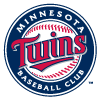 TWINS
TWINS
Over the last three years, the Twins have been a model organization when it comes to nailing first-round picks. Their top three prospects are all top-35 overall prospects and were selected in the first round of the last three drafts. After the big three, there are some high-upside international signees that could climb rankings this year. This is a deep system, but it falls off in a hurry after the top five.
1. Royce Lewis, SS, 19, High-A
Royce Lewis smash to Right Field @MiracleBaseball@Twinspic.twitter.com/bsVRksv4s1
— DAVE KIRILLOFF (@kirilloff19) July 30, 2018
There is no reason for him to still be underrated, but I think Lewis somehow still is. He has first-round fantasy upside, thanks to easy plus speed that he should maintain into his mid-to-late 20s. His realistic ceiling is a 25/25 guy who hits .300. He may eventually end up in center field.
Royce Lewis Home Run August 17@Twins@MiracleBaseballpic.twitter.com/t1Hamz8PMS
— DAVE KIRILLOFF (@kirilloff19) August 18, 2018
2. Alex Kirilloff, OF, 21, Double-A
Good morning. Here are some nice open rips from #MNTwins stud prospect Alex Kirilloff. pic.twitter.com/g3jV6iCznr
— Josh Norris (@jnorris427) July 29, 2018
Kirilloff is at least a plus hitter with plus power. He missed all of 2017 recovering from Tommy John surgery, but made up for lost time and then some in 2018. It's a pretty straightforward profile, but he also has 50-grade speed, which doesn't get brought up much. That means he could be one of those four-category studs who chips in eight or nine steals each year. He seems on a track to get his service time manipulated, likely debuting in early 2020.
3. Trevor Larnach, OF, 22, High-A
OH MY GOODNESS.#CWS MADNESS.WE ❤️ COLLEGE BASEBALL! pic.twitter.com/69L8ZPYusr
— NCAA Baseball (@NCAACWS) June 28, 2018
The best fantasy prospect from the 2018 draft, Larnach may be a negative on defense, but he should hit around .300 while hitting 30-plus homers in his peak seasons. His left-handed swing is a thing of beauty and he exhibits really impressive plate coverage for a 6-foot-4 slugger.
4. Wander Javier, SS, 20, Low-A
Javier still offers a ton of upside, and he may be a bit of a forgotten man in some leagues. He could develop 30-homer pop and may be able to flirt with 20-steal seasons early on. The road ahead will still be long, as I don't expect him to play above Low-A this year. Look for him to be held back in extended spring training until the weather warms up in the Midwest League.
5. Brusdar Graterol, RHP, 20, High-A
Graterol's path to becoming a No. 1 starter is clear and one shared by a dozen other high-velocity prospects in the lower levels: improve command, sharpen secondary pitches, stay healthy. If he does those three things, he will be fantasy gold. The floor with Graterol is a high-leverage reliever.
6. Akil Baddoo, OF, 20, High-A
Baddoo was supposed to have a plus hit tool and then he hit .243 while his strikeout rate doubled in his first taste of full-season ball. His 9.2 LD% was the main culprit. He will always be better in OBP leagues and his plus speed makes him appealing in all roto formats. There is still bounce-back potential given his age and previous success.
7. Misael Urbina, OF, 16 Dominican Summer League
Running down a dream. Here's outfield prospect Misael Urbina (Venezuela) running 60 yards in front of scouts here at Estadio Quisqueya. The timed run is the first part of the morning workout here at @MLB International Prospect Showcase. pic.twitter.com/9bv5nU2gC7
— Jesse Sanchez (@JesseSanchezMLB) February 21, 2018
While he is not my favorite player from last year's J-2 class, I expect to end up with a lot of Urbina shares. He has pretty much everything going for him – plus speed, good body, good hit tool, premium defensive position, young for his class. If it doesn't work out, you didn't waste a high pick on him.
8. Willians Astudillo, C/3B, 27, MLB
With Jason Castro and Mitch Garver (both of whom are better defensive catchers than Astudillo) still around, Astudillo might not break camp on the 25-man roster, yet he is being drafted as a C1 in NFBC leagues. This is an indictment of the catcher pool, but also of the people drafting Astudillo. The case for Astudillo is that he will probably hit close to .300. Buster Posey is the only other catcher who can claim that. However, the expectations for counting stats should be minimal. There are certain scenarios where having Astudillo is nice – if you think you've got the counting stats locked up and just want to protect batting average with your catchers, for instance. But he is being drafted as if he will bring more to the table than that.
9. Lewis Thorpe, LHP, 23, Triple-A
Thorpe is the top pitching prospect in this organization that figures to spend significant time in the majors this year. His realistic ceiling is as a low-end No. 3 starter, but he will likely be more of a No. 4. There is very little buzz around Thorpe in draft-and-hold formats, which is surprising given his minor-league track record.
10. Jordan Balazovic, RHP, 20, High-A
A 6-foot-4, 175-pound righty with a big fastball and solid command/control, Balazovic dominated in just over 60 innings as a 19-year-old at Low-A last year. He could add even more velocity to what is already an easy plus fastball, but the key to him breaking out this year will be improving his secondary offerings.
11. Jhoan Duran, RHP, 21, High-A
Duran was essentially the headliner the Twins received from Arizona in the Eduardo Escobar trade, and he was particularly excellent at Low-A after switching organizations. His fastball is a mid-90s monster but his secondary offerings are still developing. He has a bit of a stiff delivery and really falls off the mound to the first base side, but it is hard to argue with the results.
12. Jose Miranda, 2B/3B, 20, High-A
Miranda has excellent bat-to-ball skills, but he probably swings a little too often, generating weaker contact instead of waiting for pitches he can drive. He is still quite young though, so there is time to refine that aspect of his game. He is better in AVG leagues than OBP leagues.
13. Brent Rooker, DH/1B/OF, 24, Double-A
He seems like a cool guy on Twitter and I'm sure he works hard at his craft, but Rooker isn't a good defender in the outfield or at first base, so he really needs to hit. He has as much raw power as anyone in this system, but struck out 26.4 percent of the time as a 23-year-old at Double-A, where he will likely return this season.
14. Nick Gordon, SS/2B, 23, Triple-A
Gordon made suckers out of many of us by excelling in a return trip to Double-A last year before being one of the worst hitters in the minors after a promotion to Triple-A. None of his fantasy-relevant tools are better than average, and he is a mediocre defender at shortstop.
15. Yunior Severino, 2B, 19, Low-A
Another international prospect that the Braves had to cough up in 2017, Severino has plus raw power and a very quick bat, but his approach needs a lot of work. He may be held back in extended spring training with Javier before they are sent out to the Midwest League as a double-play duo.
16. LaMonte Wade, OF, 25, Triple-A
If only Miranda, Rooker or Severino had Wade's approach and eye at the plate. He has routinely flirted with OBPs over .400 despite the fact he doesn't do a ton of damage when he connects. There isn't anywhere for him to play in Minnesota at the moment, but he could get a look if the Twins deal with injuries.
17. Gilberto Celestino, OF, 20, Low-A
At this point, Celestino and Leody Taveras have nearly identical tools. For Taveras, that's a bad thing, but it illustrates Celestino's path to an MLB role. He should be able to handle center field and has plus speed that could provide value on the bases. The question is, how much will he hit? The hope is he provides a high, yet fairly empty batting average.
18. Ryan Jeffers, C/1B, 21, Low-A
Jeffers is a bat-first catcher that the Twins will hope to develop into a passable defender behind the dish. These types of college draft picks almost never pan out, but as long as he sticks behind the plate, the dream of a top-10 fantasy catcher remains. He could end up with above-average power and an above-average hit tool.
19. DaShawn Keirsey, OF, 21, Low-A
Keirsey needed hip surgery in college, which led to him falling to the fourth round of last year's draft. He was impressive in rookie ball, but needs to get the ball in the air more in order to do enough damage to project as a regular. Plus speed is the main selling point.
20. Michael Helman, 2B, 22, High-A
Helman received $220,000 in the 11th round of last year's draft and proceeded to destroy Appy League and Midwest League pitching. College second baseman often perform in the lower levels before getting neutralized by upper-level pitching, and given Helman's lack of pedigree, it is best to take a wait-and-see approach until he gets to Double-A.
21. Luis Arraez, 2B, 21, Double-A
Arraez missed most of 2017 with a torn ACL, but still made it to Double-A shortly after his 21st birthday. His contact skills are elite, but he lacks impact speed or power. That said, he has always performed better than the average hitter in each league he has played in.
22. Luke Raley, 1B/OF, 24, Triple-A
Devin Smeltzer, a left-handed reliever, might have been the real-life headliner in the return package from the Dodgers for Brian Dozier, but Raley is the only player of note for fantasy purposes from that package. As you can tell by his age and position(s), he is probably nothing more than a Quadruple-A bat when it is all said and done, but he has always performed, so we can't write him off just yet.
23. Blayne Enlow, RHP, 20, Low-A
Enlow received first-round money after coming off the board with the first pick of the third round in 2017, but he is still more projection than substance. The hope is that the 6-foot-3 righty will add velocity to his fastball in the coming years. That will be necessary if he is to make it as more than a back-end starter.
24. Gabriel Maciel, OF, 20, Low-A
Another player that the Twins received from Arizona in the Eduardo Escobar deal, Maciel has plus-plus speed and makes a lot of contact, but he doesn't impact the baseball much at this stage of his development.
25. Lewin Diaz, 1B, 22, High-A
Diaz was a high-pedigree J-2 signee all the way back in 2013, and while he has shown flashes at times, he has never really had a breakout year. He has plus raw power and makes consistent contact, but the on-base skills need to develop if he is to make it as a first baseman.
26. Josh Winder, RHP, 22, Low-A
A college arm that the Twins grabbed in the seventh round last year, Winder has good size (6-foot-5, 210 pounds) and excelled in the Appy League after signing. His margin for error is slim, but he could develop into a No. 4 starter.
27. Kohl Stewart, RHP, 24, Triple-A
Stewart has been a groundball machine since entering pro ball as the No. 4 overall pick in 2013, and he carried that skill over in his big-league debut last year (53.5 GB% in 36.2 IP). However, he also carried over his inability to miss bats (15.1 K%). He could be a back-end starter that can be streamed in really deep leagues.
28. Jorge Alcala, RHP, 23, Double-A
The Astros appear to have pulled one over on the Twins when they acquired Ryan Pressly for Celestino and Alcala. Of course, Pressly didn't reach his potential until after the trade, but I've detailed Celestino's difficult path to the majors and Alcala has a similarly difficult road. He has a monster fastball that touches triple digits with ease, but nothing else in his profile grades out as even average. The hope is that he develops into a late-inning weapon.
29. Aaron Whitefield, OF, 22, High-A
Whitefield is a little old and has some contact issues, but he is a good defensive outfielder and has at least plus speed on the bases, so I don't want to write him off just yet. He will need to perform in a return trip to High-A.
30. Stephen Gonsalves, LHP, 24, Triple-A
Gonsalves' deceptive style obviously became less effective as he climbed the ranks, and he predictably fell flat in his big-league debut. The thing about deception is that you really need to be able to locate your pitches in order to make it work, and Gonsalves has been unable to do that thus far.







